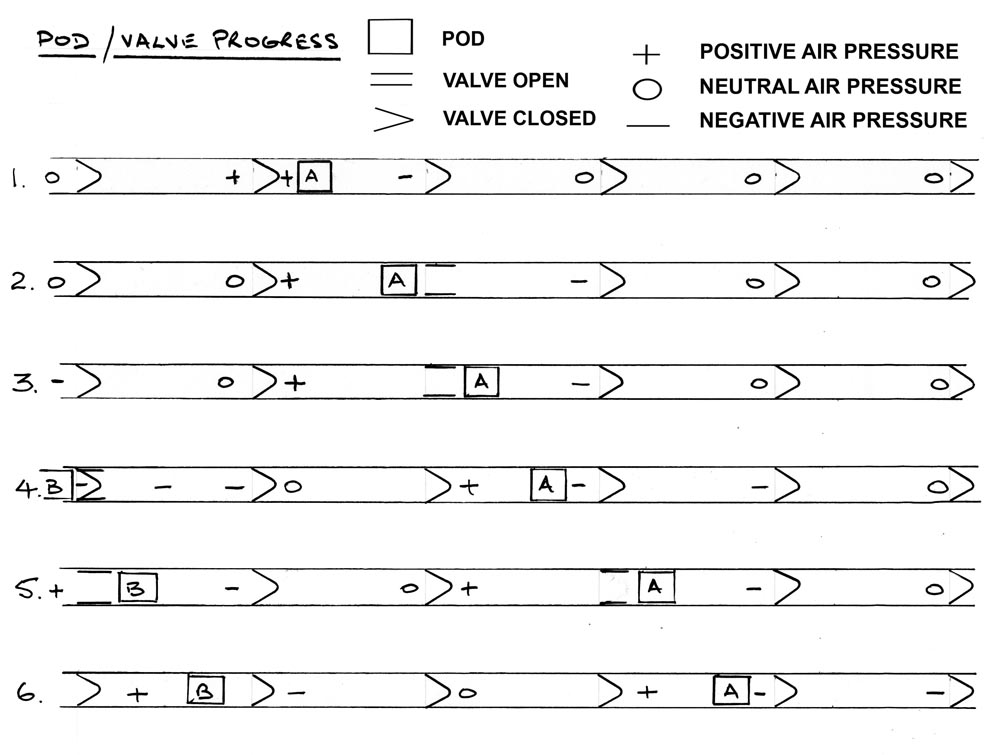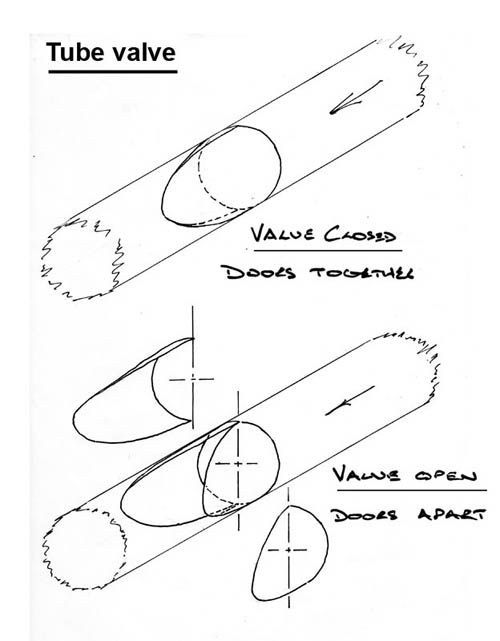| Musings on Tube Transport | Man in a Shed Biography | Tube Transport Problems | Tube Transport: my concept | The Hyperloop: my thoughts |
Tube Transport and the Hyperloop
Musings on the problems Elon Musk’s Hyperloop will have to overcome
On 12th August 2013 Elon Musk will announce his plans for a futuristic new method of travel, the Hyperloop. Elsewhere the ET3 (Evacuated Tube Transport Technologies) is also working on the same concept. In my own humble way as a Man in a Shed, I have long been intrigued by this idea which would create a very efficient, very high speed and elegant solution to many of today’s transport problems. The idea is not new as the Victorians had a successful pneumatic tube transport system working beneath the streets of London exactly 150 years ago. But with today’s technology surely we can do better!
The current thinking around Tube Transport seems include removal of all or most of the air from the whole length of the tube, in order to cut the air resistance to near zero. So the pod in which the travellers sit is moving in a vacuum. This variation on the general TT theme gives two design problems.
Firstly, the pod has to be propelled through the tube by some means, with suggestions including Mag-Lev or an electromagnetic field. These will require a rail, and / or coils of wire to run throughout the length of the tube, without being interrupted by supply breaks or mechanical failure, nor should they be affected by junctions where tubes spur off or join.
The second is maintaining an air supply to the travellers, throughout the journey, which may include delays. This air, or perhaps just oxygen, will have to be carried inside the pod. Compressed air or oxygen could to be stored in high pressure cylinders with a suitable regulator to drop the gas to ambient, ie pod pressure. Alternatively the gas could be liquified. In either case this equipment is bulky and would require heat input as the gas pressure is dropped from say 300 bar to 1 bar, or as it vaporises from a liquid, and where would this energy come from to avoid freezing the pod’s occupants?
My design does not involve a vacuum and so avoids these problems.
The pod is propelled by a difference in air pressure, with higher pressure behind it than is in front. The tube needs no rail or coils of wire or electricity, it is just a tube. The occupants’ air is supplied from the high pressure air behind the pod, and does not need to carry a complicated and chunky air system with a finite supply.
To elaborate on my earlier musings, I envisage a system of two parallel tubes, each of around 1.5m in diameter to contain the pods travelling in opposite directions. These tubes would be serviced by pneumatically operated and computer controlled air mains running in parallel which would link into the tubes at intervals to regulate and maintain high and low pressure in the tubes.
This alternative design does however need a) valves sited at intervals of a few kilometres inside the tube and b) supplies of high and low pressure air to be fed through the remotely controlled regulators, connected to the tube. The valve doors are opened and closed, ahead of and behind the pod, to maintain the pressure differential as illustrated in the diagram below. High pressure air is supplied into the section of tube behind the pod until it passes through the open doors which then close. The next tube section is then pressurised in turn, behind the pod.
The pressure would be produced by a compressor at the start of the tube’s journey and along the route further compressors would regulate the link between the high and low pressure air mains at staged intervals. Pod speed and braking would be controlled using the pressure differential in each section of the tube.


The tube valves consist of two symmetrical doors. Both hinge vertically and when in the open position swung apart into shaped recesses in the tube wall enabling the pod to pass smoothly between them. A more detailed explanation of my concept for Tube Transport can be found here.
Looking at a broader picture, the system will start by linking major cities and distribution centres, with more local stations being added depending upon viability and demand. As with all Tube Transport concepts, it will be these junctions or switch points which will prove the major problem areas to allow entry and exit whilst maintaining the integrity of the system, whether pressurised or evacuated. I have devised a suggested solution for my own concept ... of which more at a later date.
There are already options available in the current transport network of road, rail and air and backed by considerable investment and government interests. To change the whole infrastructure of a town, county or country will require incontrovertible evidence of massive benefits in reduction of travel time, reduction of travel costs and - in todays’ Eco-Green environment - the reduction of dependence on fossil fuels.
I await Mr Musk’s announcement with great anticipation. He has highly specialised experts and boundless resources at his disposal. I have only my imagination and dreams to design, construct and resolve the problems of Tube Transport.... but I wonder if we are ‘on the same (pressurised) track’ as it were. Mr Musk and members of ET3 I am here if you want me!
Text and drawings © Andy Marks 'A Man in A Shed'
Andy is also a partner in Skyscan a British aerial photography company.